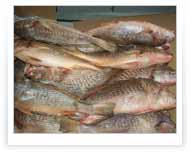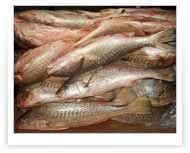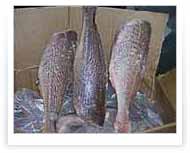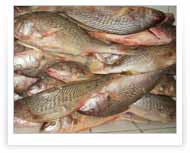| |
Description
It has a spindle shaped sturdy body, covered with scales and has a rounded tail fin. It also shows two dorsal fins, the first one with spines and a ventral mouth with menthonic pores.
There are male and female whitemouth croakers but no sexual dimorphism occurs. This species reproduces itself by external fertilization.
Feeding habits
Its feeding habits are benthic and occasionally catch self moving organisms. the most frequently eaten animals are crustaceans, bivalve mollusks such as MUSSELS, CLAMS; polychaetous and juvenile fish such as the Argentine anchovy and the “menhaden type” fish. However, the proportions, groups and species vary according to the geographical zone, the kind of bottom, the size of the fish and the season of the year.
Economic importance and maximum allowed capture
It is the coastal species most unloaded of the industrial fleet working in the Río de la Plata and in the Argentine – Uruguayan Common Fishing Zone.
Commercial fishing is done with bottom otter trawl nets, using pair trawling and line fishing. It is commercialized in one piece, frozen for the over seas market and fresh for the domestic market.
|






